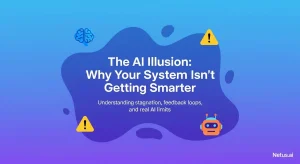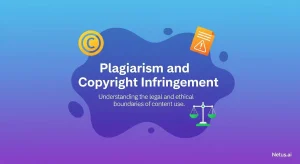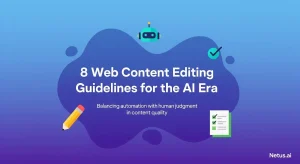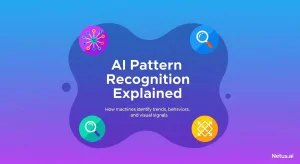Fighting Back Against Plagiarism: Compare Your Microsoft Word Documents Efficiently
Ashley Merit
Content writer and editor for Netus.AI
Table of Contents
Fighting Back Against Plagiarism. Microsoft Word is a widely-used program by professional writers, students, and research scholars alike for creating and editing content. In today’s digital age, there is an abundance of information available on various topics, making it essential for writers to ensure their work is original and free from plagiarism. Fortunately, Microsoft Word offers tools such as the Compare Documents feature, which allows writers to check for duplicate content within their work.
In an effort to maintain the authenticity of their content, it is crucial for writers to be vigilant about not replicating existing work. This diligence extends to resumes and cover letters, where using duplicate content checkers can ensure the uniqueness of each submission. Microsoft Word has varying versions, but rest assured these tools cater to all versions to effectively serve their purpose.
Key Takeaways
- Microsoft Word is widely used for content creation and offers tools to check for plagiarism
- Ensuring originality is crucial for maintaining authenticity and avoiding negative consequences
- Duplicate content checkers cater to all versions of Microsoft Word, helping users create unique work.
How to Use Microsoft Word Compare Documents?
With Microsoft Word, easily compare documents on both Windows and Mac. Upload the saved documents or simply copy and paste the content into the dedicated space. Click the “compare” button, and in an instant, the comparison process is completed.
How to Identify Plagiarized Sections in Writing
To detect plagiarized content in writing, use software that compares the text with existing online works. The software highlights the plagiarized portions and shows their sources, ensuring originality in the submitted papers.
How Anti-Plagiarism Software Strengthens Defenses Against Content Theft
In the past, plagiarism detection largely relied on human efforts, which had limitations in identifying copied content, especially when the original material was unfamiliar. Thus, many plagiarized works went unnoticed.
With the advent of anti-plagiarism software, sophisticated algorithms now swiftly detect copied or paraphrased content. This technology has significantly improved the efficiency and accuracy of plagiarism detection. Innovative tools like Copyleaks and Quetext help users ensure their work remains original.
Advancements in anti-plagiarism technology include:
- Wide-ranging web scans: These tools search millions of online sources, allowing for more extensive and accurate cross-referencing of content.
- Effective similarity detection: By comparing text against a vast database, similarity checkers can identify even trivial matches, enabling users to amend or cite their content accordingly.
- Continuous updates: As the methods and techniques of plagiarism evolve, so does the software’s capabilities. Developers and experts consistently strive to enhance algorithms to outsmart plagiarists.
Thus, the anti-plagiarism software creates robust shields to protect original work from content theft and ensure that academic integrity is maintained in the digital world.
How Much Plagiarism Is Acceptable?
Deciding how much plagiarism is acceptable hinges on two main factors: the intention behind the writing and the guidelines set by the institution or organization where the work is being submitted.
Plagiarism detection software often assigns a percentage score for the content. If the percentage exceeds 50%, it raises concerns, but a score under 25% is generally seen as acceptable. However, it is important to note that different institutions and organizations have varying requirements regarding plagiarism, with some not tolerating even the slightest trace of it.
These applications also provide an originality score for theses, projects, blogs, or articles, which can serve as an indicator of a writer’s quality and adherence to academic formats such as APA, MLA, and Chicago. Ensuring proper citation practices and including a comprehensive bibliography helps to maintain a low percentage of plagiarism and adheres to the set guidelines.
How to Address the Causes of Plagiarism
To effectively combat plagiarism, it’s essential to understand the underlying reasons that lead to this dishonest practice. The following points provide insights into addressing these causes:
- Acknowledging original authors: Giving credit where it’s due is crucial in avoiding plagiarism. If a person’s work goes unrecognized, others may mistakenly claim it as their own. Always remember to provide proper attribution and use in-text citations when using someone else’s work.
- Efficient time management: Often, writers and students resort to plagiarism when they are pressed for time. Developing a well-structured writing process can help manage time efficiently, preventing the need to plagiarize.
- Avoiding self-plagiarism: Writers may unknowingly commit self-plagiarism by recycling their previous work without realizing the consequences. Ensuring that every piece of writing is original and unique will help keep self-plagiarism at bay.
- Using quotation marks and paraphrasing: When incorporating someone else’s words or ideas into your work, use quotation marks to indicate direct quotes and paraphrasing to restate the information in your own words. This makes it clear that the content is not your original work.
- Citing sources responsibly: Researchers sometimes overlook the importance of citations in their academic papers. While it is not necessary to fill a paper with citations, a moderate amount is essential. Including proper citations not only credits the original author but also demonstrates the integrity and reliability of your work.
By following these guidelines, writers can confidently produce high-quality work that respects the contributions of others and upholds the principles of academic integrity.
How Unintentional Plagiarism Incidents are Addressed
When dealing with unintentional plagiarism, students and professional writers are made aware of their wrongdoing. Schools and institutions may also implement stricter measures to prevent further occurrences. Teachers play a crucial role in educating students on avoiding plagiarism.
How Intentional Plagiarism Faces Consequences
Penalties for plagiarism vary depending on the individual and the organization involved. For researchers, their work may be rejected. Students might receive stern warnings or lose academic credit for an entire year. Professionals and educators can face suspensions from their roles. Authorities and institutions enforce appropriate disciplinary actions to discourage such misconduct.
Tips for Writers to Protect Themselves Against Plagiarism
Writers and content creators should be familiar with the latest plagiarism guidelines to ensure their ideas are safeguarded. Utilize plagiarism checking software, either free or affordable, to analyze your work. After completing your piece, obtain a report to demonstrate the originality and plagiarism score, which ultimately validates the true authorship of your content. Following these practices allows writers to confidently present their work and maintain a clear, knowledgeable stance on avoiding plagiarism issues.
Frequently Asked Questions
How can I utilize Microsoft Word to detect plagiarism in my document?
Microsoft Word offers a built-in feature to check for plagiarism. To use this feature, simply go to the “Review” tab and click on “Check Document” or “Editor” depending on your Word version. A sidebar will appear offering editing suggestions and highlighting any potential plagiarism.
What are the most effective approaches to compare two Word documents for originality?
Comparing two documents for originality can be done using the Compare Documents feature in Microsoft Word. Simply open Word, ensure both documents are saved and closed, and follow the steps provided in the linked guide to effectively compare the originality of each file.
Are there complimentary tools available for checking plagiarism in Word documents?
Yes, several free tools can help you check plagiarism in Word documents, such as Copyleaks. These tools typically require you to upload your document or paste the text into a provided space, after which they will analyze the content for potential plagiarism.
How can I resolve issues when Microsoft Word’s similarity checker isn’t functioning properly?
If Microsoft Word’s similarity checker isn’t working, try the following:
- Ensure your document is saved and closed before attempting to use the feature
- Verify that your Microsoft Word is updated to the latest version
- If the issue persists, consider using a third-party plagiarism checker as an alternative
Is Microsoft Word’s plagiarism detection reliable for academic papers?
While Microsoft Word’s plagiarism detection tool can be helpful in identifying potential issues, it might not be as comprehensive as some specialized plagiarism detection tools. For academic papers, it is recommended to use a combination of Microsoft Word’s built-in checker and additional plagiarism checking tools to ensure the most accurate results.
How can you determine if text is copied and pasted within Word documents?
When comparing documents, the Compare Documents feature in Microsoft Word can highlight similarities between the two files. This can help you identify if portions of text have been copied and pasted. Additionally, plagiarism checking tools like Copyleaks can analyze single documents and identify potentially copied content within the text.

The shortcomings of content generated by AI | NetusAI
Discover why fast, high-volume AI content often fails to deliver real results. Learn about the crucial missing feedback loop and how implementing performance tracking can transform your AI content strategy.

The illusion of AI: Your system's intelligence gap | NetusAI
Stop wasting marketing spend! Most AI tools don’t learn from results, causing content stagnation and low engagement. Discover why your generative AI isn’t getting smarter and what system actually learns and optimizes content.

Plagiarism and copyright infringement | NetusAI
Learn the distinct differences between plagiarism and copyright infringement. Understand the ethical and legal implications and get practical strategies for avoiding both academic and creative work with NetusAI.

Tips and strategies for mobile content marketing | NetusAI
Optimized for mobile-first indexing, learn 5 essential strategies to capture attention, enhance engagement and drive leads and sales with your mobile content marketing.

Web content editing guidelines for the AI era | NetusAI
Review web content editing guidelines for the AI era. Learn how to edit AI-generated content, ensure authenticity and optimize for SEO and readability.

Explaining AI pattern recognition | NetusAI
AI pattern recognition enables machines to identify trends for diverse applications, from detecting plagiarism to fraud. Discover its processes, models and real-world benefits.
